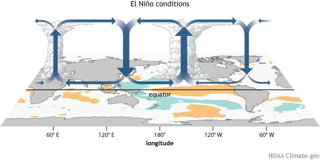Introduction
February 2024 saw average global temperatures rise, marking the 9th consecutive month in both sea and surface air temperatures.
Given the variability of day-to-day temperature and precipitation as well as other influences on climate such as volcanic activity or El Niño, meteorologists use a 30-year average to establish a benchmark for assessing climate trends. This is called the ‘Climatological Standard’ - the most current 30-year baseline spans from 1991 to 2020.
For February 2024, global air temperatures averaged at 13.54oC which is 0.81oC above the 1991-2020 global average and 0.12oC above previous highest temperature in 2016.

In the UK, England’s average temperature was 0.5oC higher than the previous record set in 1990. In Wales the temperature was 0.1oC higher than the 1998 record. Scotland, however, recorded a temperature of 0.5oC lower than the 1998 high of 6.8oC. Consequently, this marks February 2024 as the second warmest on record since 1884. In addition, in the same 140 years, four of the top ten warmest Februarys on record are within the past six years: 2024, 2023, 2022 and 2019.
Regionally, Europe saw a 3.30oC increase over the 1991 – 2020 average, specifically in Central and Eastern Europe. Globally, there was an increase in average temperatures in northern Siberia, Central and North West North America, most of South America, Africa and Western Australia.
Global sea temperatures reached a record high of 21.06oC, surpassing any previous monthly measurement and 0.08oC higher than the record set in August 2023.
Causes of temperature change
One of the causes of temperature change can be attributed to global warming. Although this is a natural phenomenon, the Intergovernmental Panel on Climate Change (IPCC) stated that human activity is the cause of enhanced global warming. This is largely due to heightened emissions of certain greenhouse gasses into the atmosphere by human activity. Notably, the level of carbon dioxide alone has surged by 40% over the past 120 years. With an increasing global population, methods of modern development and feeding the populous are the main drivers behind the emissions.
In addition, there are natural events which can affect temperatures in specific regions. The National Oceanic and Atmospheric Administration (NOAA) has officially declared that as of June 2023, the planet entered an El Niño event. This is currently predicted to continue until late Spring when the planet will go into ENSO-Neutral.
El Niño is an important event to recognise as it is one of the natural causes of more localised weather changes which happen every 2-7 years. Nevertheless, it is crucial to acknowledge that even with this phenomenon happening, it does not account for the increase in global temperatures over a long period of time.

Effects
The increase in temperature has been felt across the globe. Southern Africa grappled with intense heat 4-5oC above the average. Australia also experienced extreme temperatures, especially in Western Australia where 40oC was recorded in Perth seven times during February – the most in any single month.
In the Valparaíso region of Chile, soaring temperatures exceeding 35oC exacerbated conditions, leading to forest fires intensified by strong winds and dry weather. The toll was severe, claiming 132 lives, affecting 20,000 individuals, and scorching 6,000 hectares of land.
In Europe, initial reports are stating that most of the continent (except for the North) was 2oC warmer than usual with southeastern regions being even higher at 4-6oC. Catalonia in Spain declared a state of emergency as water levels in reservoirs went down to less than 16% capacity due to lack of precipitation in the area.
Futures
The global commitment to counter rising temperatures and address impacts of climate change is a shared global priority, yet achieving universal management poses challenges. The 2015 Paris agreement was one of the biggest breakthroughs in international collaboration in the fight against climate change. It was adopted by 196 Parties at the UN Climate Change Conference (COP21) to limit global warming to 1.5oC. However, with a year to go before the agreed peak of greenhouse gas emissions, implementation of these changes is not progressing seamlessly.
Positive shifts are emerging from some parts of the global community. There are signs of change from large TNCs focusing on sustainable futures to increase investment in renewable energy and campaigning from movements such as Extinction Rebellion. However, the wealthier G20 nations arguably still need to do more to reduce their emissions, support the development of other countries, and act as the front leaders in mitigating the effects of climate change to ensure that there is a sustainable future for all.
If global temperatures are not addressed, the IPCC has warned that there will be catastrophic impacts on the planet affecting all areas of life from biodiversity to food supply and human health.
Further reading
How does the climate system work? Met Office
El Niño – what is it? Met Office
Catalina – State of Emergency, BBC Article, 1st February 2024
File nameFiles
File type
Size
Download



